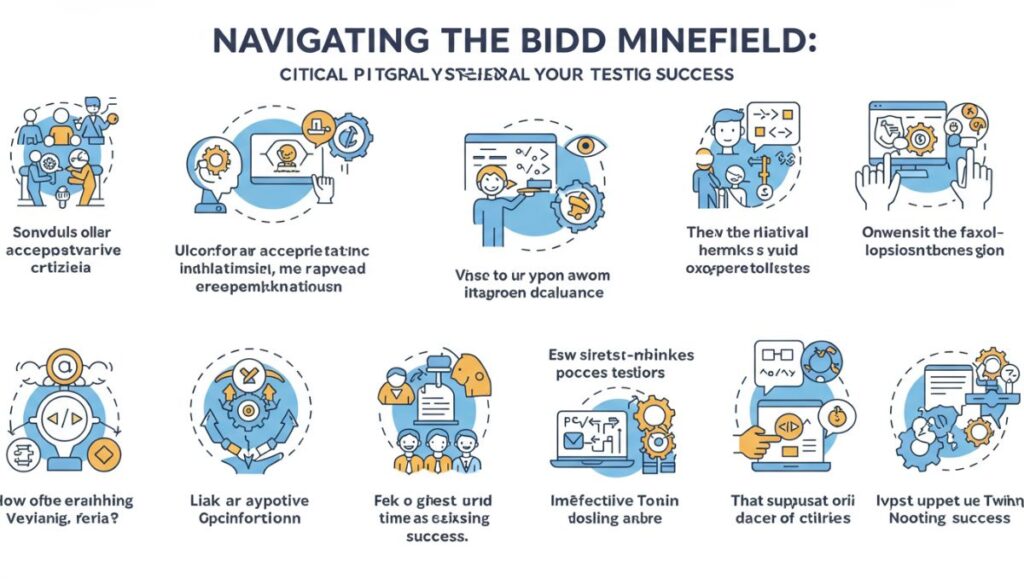A revolutionary method for software testing, behaviour-driven development promises improved teamwork, more precise requirements, and more dependable products. However, behaviour driven testing tools may become double-edged swords when used improperly, just like any other potent approach. Many businesses have great hopes for behaviour-driven testing and rush into it, only to fall victim to typical errors that can upset team members in every department and jeopardize their overall quality assurance approach.
1. Overcomplicating Scenarios With Unnecessary Technical Details
One of the most common mistakes made by teams adopting behaviour-driven testing techniques is cramming their scenarios with an unnecessary level of technical implementation details which obscures the desired user behaviour and business value. BDD scenarios should not go into detail of database queries, API calls, and specifics of system architecture that can not be understood or judged by business stakeholders, but what users actually want to accomplish and why they need a particular capability.
2. Writing Vague Scenarios That Lack Clear Success Criteria
Another key mistake is creating behaviour-based scenarios that appear to be spectacular, yet do not give teams any specific, quantifiable measures of success, to determine whether functionality is working as intended. Ambiguous terms such as system should be working or users should get a good experience are common in ambiguous contexts and without defining what sound functioning or positive user experience means precisely and thus can be tested. Due to the fact that testers cannot explicitly declare pass-or-fail criteria to be used when they are doing validations, and developers cannot determine exactly how they were supposed to write the behaviour clearly, such ambiguous situations create doubt on the implementation side.
3. Neglecting Ongoing Scenario Maintenance and Updates
Teams usually perceive behaviour-driven testing scenarios as static documents rather than dynamic specifications that must change in tandem with shifting business needs and system functionality, which leads them to underestimate the continuing maintenance requirements. Confusion and a decline in trust in the BDD process as a whole result from scenarios that are out-of-date, irrelevant, or inconsistent with current system behaviour due to maintenance negligence. Scenarios can actually obstruct development progress if they are not routinely evaluated and updated. This is because they may test out-of-date business rules that are no longer relevant or provide inaccurate feedback about planned capabilities.
4. Focusing Exclusively on Happy Path Scenarios
Creating scenarios that solely address ideal user journeys while utterly disregarding error situations, edge cases, and extraordinary circumstances that users commonly experience in real-world program usage is a typical mistake in behaviour-driven testing. Happy path scenarios are undoubtedly crucial for confirming essential functionality, but they only cover a small portion of the ground, leaving apps susceptible to malfunctions when users depart from anticipated behaviour patterns or run against system constraints.
5. Treating BDD Tools as Pure Testing Automation Solutions
Seeing behaviour-driven testing tools only as automation frameworks rather than as collaborative communication tools that facilitate common understanding across the development lifecycle is perhaps the most basic error teams make. This limited viewpoint causes teams to ignore the human cooperation components that make BDD genuinely beneficial for project success in favor of concentrating just on technological automation capabilities. Teams lose out on chances to enhance stakeholder engagement, define requirements before development starts, and foster a sense of shared ownership of quality throughout the project team when they approach BDD tools as merely another testing framework.
Conclusion
The proper attitude, teamwork, and tools that reduce complexity rather than increase it are necessary to avoid BDD mistakes. At this point, the Opkey, an enterprise testing tool, changes the game. Opkey gives business and IT teams the ability to develop, expand, and sustain testing with unparalleled speed thanks to its No-Code platform, 30,000+ pre-built test cases, and smooth ERP test automation. Opkey assists businesses in seeing the full potential of BDD by removing superfluous complexity and guaranteeing ongoing alignment with business requirements.






